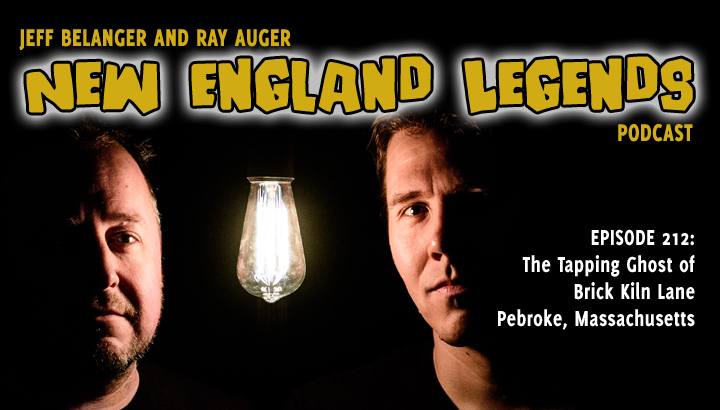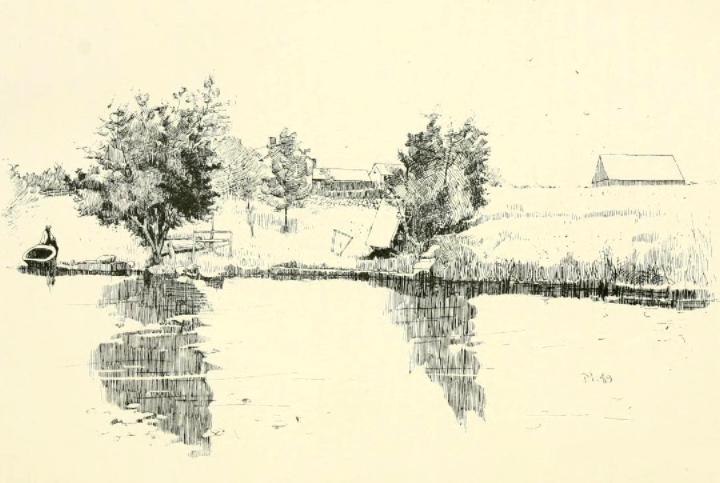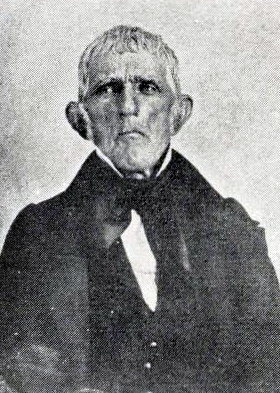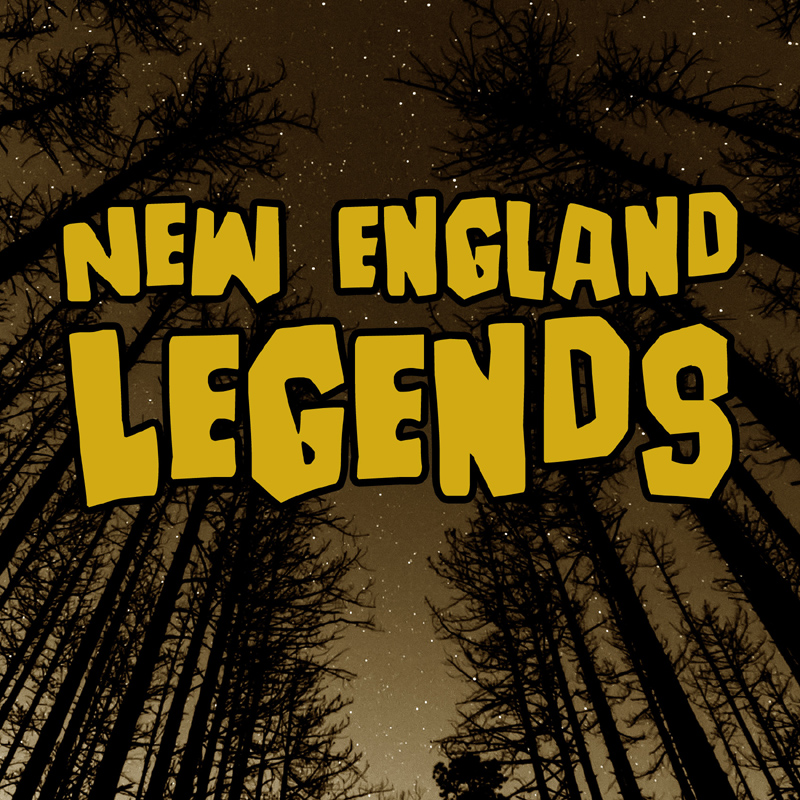
In Episode 212, Jeff Belanger and Ray Auger stroll down Brick Kiln Lane in Pembroke, Massachusetts, searching for a tapping ghost who was seen and heard over the span of years back in the 1940s. This ghost has ties to the old shipyard, which has ties to the Boston Tea Party. This ghostly experience was documented by local journalist Curt Norris in the 1980s. Could these taps come from the ghost of shipbuilder Barker Turner?
CALL (OR TEXT) OUR LEGEND LINE:
(617) 444-9683 – leave us a message with a question, experience, or story you want to share!
BECOME A LEGENDARY LISTENER PATRON:
https://www.patreon.com/NewEnglandLegends
CREDITS:
Produced and hosted by: Jeff Belanger and Ray Auger
Edited by: Ray Auger
Additional Voice Talent: Jim Harold
Theme Music by: John Judd
SUBSCRIBE TO THE PODCAST FOR FREE:
Apple Podcasts/iTunes | Google Podcasts | Spotify | Pandora | Stitcher | Amazon Podcasts | TuneIn | iHeartRadio
JOIN OUR SUPER-SECRET:
New England Legends Facebook Group

Sketch of the Brick Kiln Shipyard from the 1889 book: History of shipbuilding on North River, Plymouth county, Massachusetts, with genealogies of the shipbuilders, and accounts of the industries upon its tributaries.

Barker Turner from the 1889 book: History of shipbuilding on North river, Plymouth county, Massachusetts, with genealogies of the shipbuilders, and accounts of the industries upon its tributaries.
EPISODE TRANSCRIPT:
*A note on the text: Please forgive punctuation, spelling, and grammar mistakes. Like us, the transcripts ain’t perfect.
[CAR DRIVING]
JEFF: Okay, we’re going to make a left just up there.
RAY: Got it. Okay, we’re turning onto Brick Kiln Lane here in Pembroke, Massachusetts. (PAUSE) Oh… this is a dead end street.
JEFF: Yeah, in more ways than one!
RAY: It’s a pretty narrow road. There are old Colonial stone walls lining the properties on the side of the street. There’s some well-manicured yards and nice homes on this quiet little street. And there’s the North River coming up on our right. This is a nice neighborhood.
JEFF: It is! But don’t let this quaint setting fool you, Ray. They say there’s a ghost who walks along this street.
RAY: A ghost?!
JEFF: A ghost with ties to the Boston Tea Party!
RAY: Where do we start looking for this ghost?
JEFF: We actually start by listening…
[TAP, STEP, TAP, STEP]
JEFF: We’re in Pembroke, Massachusetts, searching for the Tapping Ghost of Brick Kiln Lane.
[INTRO]
JEFF: I’m Jeff Belanger and welcome to Episode 212 of the New England Legends podcast. If you give us about 10 minutes, we’ll give you something strange to talk about today.
RAY: And I’m Ray Auger. Thank you for joining us on our mission to chronicle every legend in New England one story at a time. We’re a community of legend seekers who love sharing tales of weirdness and lore. So many of our story leads come from you. Like this one! Thanks to Laurie Hartrey for sending in an old newspaper article that got us started on this one.
JEFF: Got a strange tale from your town? Don’t assume we’ve heard it. Please reach out to us anytime through our Web site, through our super-secret Facebook group, or by calling or texting our legend line anytime at 617-444-9683.
RAY: Before we go searching for this tap, tap, tapping ghost, we want to take a minute to thank our Patreon Patrons! This amazing group of legendary people kick in just $3 bucks per month to help with our hosting costs, production, marketing efforts, and everything else we do to bring you a new podcast each week. AND they get early access to new episodes, plus bonus episodes and content that no one else gets to hear. Just head over to patreon.com/NewEnglandLegends to sign up.
[COFFEE CUPS CLANKING / WATER POURING]
RAY: Jeff… are you making tea?!
JEFF: I am! Because this Pembroke ghost may have ties to the earliest days of the American Revolution. AND ties to the historic Boston Tea Party.
[CLINKING CUPS]
JEFF: Cheers!
RAY: Cheers!
[SIPS TEA]
JEFF: Though it’s long gone now, right up here on the banks of the North River once stood a bustling shipyard—technically TWO shipyards right next to each other. The Brick Kiln Shipyard was established here in 1730. This facility was so big they could have three or four large vessels under construction at the same time. We’re talking 300-ton, 100-foot sailing ships. And one of the ships constructed right here was a ship called Beaver.
RAY: Ohhhhkay… now I’m making the connection… the same Beaver that was central in the Boston Tea Party.
JEFF: The very same.
RAY: A reproduction of the Brig Beaver is on display in Boston Harbor right now. It’s a ship people can tour. I was there years ago with my kids.
JEFF: The original Beaver was built right over there in 1772 by Ichabod Thomas. The 85-foot brig was a whaling vessel. It would sail to England with a load of whale oil, then load up with dry goods and other supplies and bring them back here.
RAY: Just a quick summary of the Boston Tea Party. In 1773, British Parliament passed the stamp act which was meant to help raise revenues for the East India Company. For the Colonists in America, it was yet another tax, and the last straw. They were tired of being taxed without representation in Parliament. It came to a head December 16, 1773, when three ships carrying tons of tea, docked in Boston Harbor. The ships were the Dartmouth, the Eleanor, and of course the Beaver. On December 16th a group of colonists dressed as Mohawk Indians boarded the three ships and dumped hundreds of crated tea into the harbor… the rest… as they say… is history.
JEFF: Yes indeed. Kind of amazing that piece of land right near where we’re standing played a role in such a significant part of American history. Anyway, the Beaver was not the first, nor the last ship built at the Brick Kiln Shipyards.
RAY: Let’s head back to 1835, and see the shipyards.
[TRANSITION]
[SAWING AND HAMMERING]
RAY: It’s late summer of 1835, and the Brick Kiln Shipyard is bustling. Shipbuilder Barker Turner, who had been part of a three-man partnership is now on his own. That means all of the responsibility to deliver these ships rests squarely on his shoulders.
JEFF: But Barker Turner is as tough as they come. He’s never had a problem with getting his hands dirty if construction is falling behind. When you’re overseeing the building of multiple ships—ships that cost a fortune to build, by the way—there’s no room for anything other than competence and fortitude.
RAY: It’s during one of these catch-up periods of construction that Barker Turner finds himself in the middle of a complicated assembly. A rope slips….
[FALLING/COLLAPSE]
AHHHHHHHHHH!
RAY: And Barker Turner’s leg is crushed! An accident like this could be lethal. There’s the risk of bleeding out. But some of Turner’s employees act fast and apply a tourniquet to Turner’s leg.
[STRUGGLING SOUNDS]
[DOOR SHUTS]
RAY: At the doctor’s office… it’s clear there’s no choice.
[SAWING SOUND/GROANING]
RAY: Barker Turner is going to lose this leg.
[PAUSE]
JEFF: You’d think losing a leg would mark the end of a shipbuilder’s career, but not for Barker Turner. Strapped with a wooden leg… he makes the short walk from his home on Brick Kiln Lane…
[PEG LEG WALKING]
JEFF: Back to the shores of the North River, where he’s back to work.
[SAWING AND HAMMERING]
RAY: Barker Turner continues to make ships until 1842. By 1848, the Brick Kiln Shipyards close down, leaving what’s left of the buildings to rot and fade into the landscape.
JEFF: From here, we’re going to jump ahead to 1986.
[TRANSITION]
JEFF: It’s March of 1986, and a writer for the Patriot Ledger newspaper named Curt Norris, pens a column about growing up on Brick Kiln Lane in Pembroke. He recalls his childhood in the 1940s, when what was left of the Brick Kiln Shipyard had been turned into the diving board at the town landing. He recalls houses that also faded into memory. But… most curiously, he recalls the story of a persistent ghost who haunted his street and childhood memories.
CURT NORRIS: The lane holds memories of something beside pastoral images. I don’t recall when I first heard taps and became aware of a very strange presence. This being, which visually showed itself as a small shadow moving over the surface of the Lane, made a series of loud tapping sounds like someone with a wooden leg. Tap… Tap… Tap…
RAY: Seeing this strange shadow and hearing the phantom taps got Curt’s mind swirling to history and stories he’d heard before.
CURT NORRIS: The taps always come up from the river end of the Lane. Very faint at first, then quite loud when just outside the house, and then fading into the distance toward Charlie and Fannie’s house. I had heard, as one of the country tales that made the rounds in those days, that Charlie Turner’s grandfather, Barker Turner, had run the Brick Kiln Shipyard. This shipbuilder had a wooden leg. Could this be the spectre of Barker Turner, traveling up from his shipyard to his house at the other end of the Lane?
RAY: Hearing the taps as often as he did got the better of young Curtis. He had to find out more.
CURT_NORRIS: I must have listened to those taps several times a week for months before I investigated. Curiosity overcame me on a night with a full moon when it was almost as bright as daylight outside. My folks had long since gone to bed and, as the tapping approached, I scrambled out of bed.
I arrived at the end of my driveway as the approaching taps, louder now that I was outside, cut through crisp Pembroke air mingled with the scents of pine and ocean. I walked down the middle of the Lane toward the taps as they grew louder.
Without pause or any break in rhythm, and with a fleeting chill, they passed through me and started to recede behind my back. A shadow the size of a basketball and moving at normal walking pace, accompanied the taps. I turned around and caught up with this apparition. I passed through it again, with that fleeting feeling of cold, so that the taps again approached behind me. I let them catch up. I strolled beside them. I passed through them at every angle, each time experiencing that tickling chill. I was utterly puzzled. There was no explanation.
JEFF: How long did this go on?
CURT_NORRIS: These frequent tapping passages continued throughout all the years we lived on Brick Kiln Lane. I never mentioned them to my family; indeed. I felt sheepish about my “ghost.” It wasn’t until last year that I mentioned it to my sister at a get-together in Connecticut.
“So you heard it, too?” Josie questions. “It used to terrify our younger sister, Carol and myself night after night.” It seems as though we each may have kept the same eerie secret.
JEFF: And that brings us back to today.
[TRANSITION]
JEFF: There’s nothing we would have loved more than to talk to Curt Norris first-hand, but sadly he passed away back in 2002. Thankfully, we still have his words and memories.
RAY: This article continues to make the rounds in Pembroke, especially around Halloween when people go looking for local haunts. And here we are parked on the side of Brick Kiln Lane waiting… maybe even hoping we might hear some strange taps coming down the road.
JEFF: And that’s the power of legend and story. Some taps on a quiet street can connect us to another era and a place that played a role in the birth of our country. I’ve said before that a ghost is history demanding to be remembered.
[OUTTRO]
RAY: We love it when you remember to subscribe to our podcast because it’s free. And do us a favor and post a review for us on Apple Podcasts. It helps other people find us. And the more people who share our stories, the more story leads that come in, and this community continues to grow.
JEFF: Speaking of other podcasts, each week we like to tell you about a podcast that we’re listening to. Ray, what are you listening to?
RAY: I’m really digging a podcast called Smartless with Jason Bateman, Sean Hayes, and Will Arnett. They talk to some top-tier celebrities, and have a bunch of laughs along the way. It’s worth checking out.
JEFF: We’d like to thank the great Jim Harold from the Paranormal Podcast, as well as a bunch of other podcasts that he produces. Thanks, Jim, for lending your voice acting talents this week. And our theme music is by John Judd.
RAY: Until next time remember… the bizarre is closer than you think.



